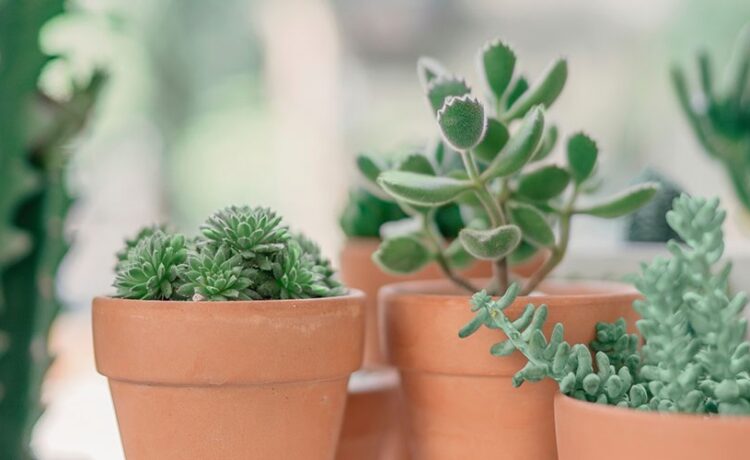Succulent plants sold outside specialized nurseries are generally grown in peat poorly suited to private cultivation. We suggest changing the substrate of these plants quickly, clearing the roots of this peat. If during this manipulation the roots are a little damaged, do not hesitate to cut them with a clean pair of scissors. Then let the wounds dry for a few days before repotting in a new, more suitable substrate. From the Succulent Market you can find the best choices now.
Succulent soil for garden centers
There are ready-made mixtures on the market called cacti potting soil or succulent potting soil. The mixtures offered are essentially composed of humus (peat, potting soil, composts, etc.) but contain little mineral matter (sand, earth, pozzolan, etc.). Many varieties, the most vigorous, Aloe, Crassula arborescens, Aeonium arborescens…, can adapt to this kind of mix. The compost being very rich and poorly drained, the plants grow quickly and produce very glossy and dense foliage, but in return the branches are fragile and very brittle, and for arborescent forms, the plants lack structure. In addition, the more delicate varieties with a more fragile root system will not resist mixtures without drainage and mineral inputs. As you buy succulents online and have the best choices there, these are all that you should know.
The right mixes
- Classic formula: 1/3 soil, 1/3 sand, 1/3 garden soil. Recommended for making homemade soil. Garden soil guarantees more solidity and robustness to the plants.
- Quick formula: ½ potting soil, ½ sand. Also gives very good results. Recommended for those who do not have good garden soil available.
The materials
The soil: The soil provides organic matter. It is made up of decomposed plant (or animal) material and supports an important microbial flora essential for plants to assimilate mineral salts. We recommend the soil called ‘geranium soil’, the one used for your flower boxes. In the Succulent Market you will also find this kind of soil.
Sand: we do not recommend sands that are too fine, which tend to have the opposite effect than that sought by compacting the mixture rather than aerating it. We also avoid sea sand which will burn the roots because of its salt content. We recommend river sand, Loire sand type or aquarium sand, sold in garden centers, aquarium departments, or aquarium stores.
Pozzolana: crushed and calibrated volcanic rock. Ideal for aerating and draining substrates thanks to its porous structure. It can be found in garden centers, but its grain size is often too high for repotting in small containers. We offer for sale a pozzolan with a smaller particle size, better suited to mixtures, difficult to find today for individuals.
As you order succulents online you can also know the following.
Perlite: a very light material obtained by heating and expanding small pieces of slag. Ideal for aerating substrates and used particularly in cutting soil.
Garden soil: the best soil known as “garden” soil is that taken from our gardens. We will of course take care to take it in a place not contaminated by pesticides or various treatments, and we will avoid the surface layer full of seeds and parasites. (The land of molehills is generally of very good quality …)
Irrigation
Irrigate as needed and allow to dry between waterings. On the other hand, it is necessary to avoid keeping the substrate completely dry for a long time because growth may be slowed down. The succulents tolerate very dry substrates for a period of time provided the roots are well established in the root ball.

